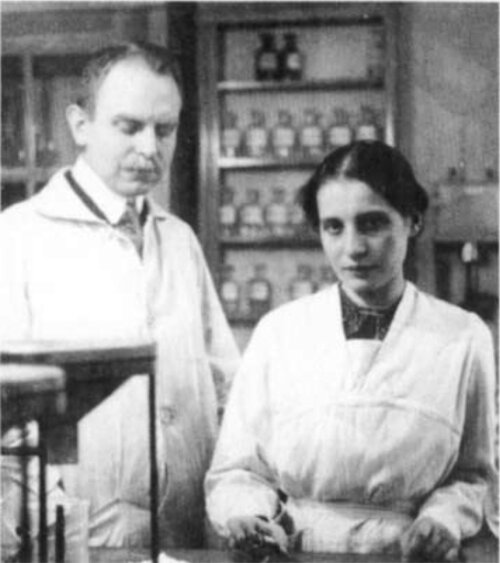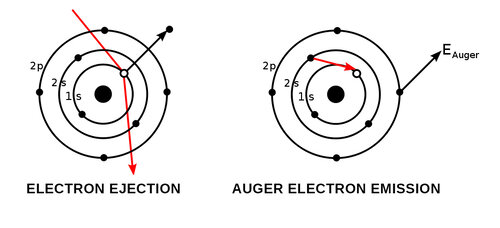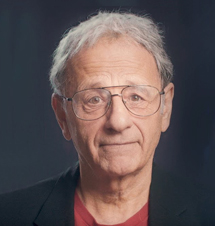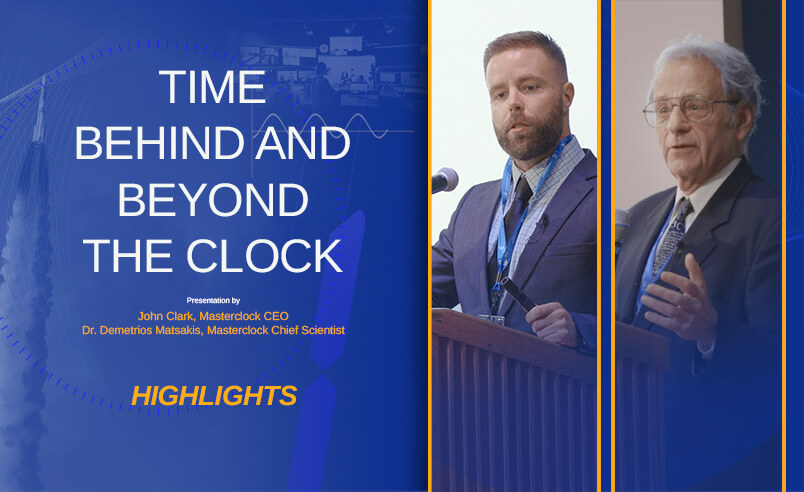There are many admirable people, and each one of us typically resonates with certain classes of them. If you are fascinated by people who make brilliant discoveries in the face of irrational opposition, you might be interested in an Austrian named Lise Meitner.
03/17/20 By Dr. Matsakis
Lise Meitner: A Woman I Admire
When she was born in 1878, women were not allowed to study physics at Austrian universities. Fortunately, those rules were beginning to be loosened when she came of age, and she got her PhD. from the “open-minded” Ludwig Boltzmann himself.
After two years of not being able to find a real job, Dr. Meitner went to Berlin, where she was allowed to work for free at the prestigious Kaiser Wilhelm Institute (KWI). The chemist Otto Hahn happily accepted her, though the bearded Dr. Emil Fisher stipulated that women be only permitted in the bathroom-less basement, so experiments could not set fire to their hair [1]. Yet Dr. Meitner built equipment, made experiments, and published results, often along with Hahn.
 Otto Hahn and Lise Meitner, 1912. Image courtesy of Wikipedia.
Otto Hahn and Lise Meitner, 1912. Image courtesy of Wikipedia.
In 1908, when women were finally allowed to study at German universities, Meitner got out of the basement and into a low-paying position, and for the next 17 years she painstakingly advanced our knowledge of nuclear physics—often collaborating with Hahn as a physics-chemistry duo [2]. Her first Nobel Prize nomination was in 1924, and one of her many discoveries was that atoms can spit out an extra electron as a byproduct of nuclear decay. A year after she published it, a brilliant Frenchman named Auger stumbled onto it. It is now known as the Auger effect.
Fast forward to the Nazi era and we find a whole new obstacle appearing, for Meitner was born to an extremely secular Jewish family. Even though she converted to Christianity in 1908 and had volunteered for the German Red Cross during WWI [3], she was only permitted to hold her position at the KWI because of her Austrian citizenship. This meant she was still able to pursue her love of physics. In 1934, she recruited Hahn and Fritz Strassmann to join her in determining the products formed when uranium is irradiated with neutrons, an investigation that would result four years later in the discovery of nuclear fission.

But in 1938, the Anschluss of Austria made her a “German citizen.” Overnight, her Austrian passport was invalidated, she was forbidden to leave Germany, and she was about to be removed from her position at the KWI. Worse would have happened had she stayed, as Jews were already being sent to concentration camps. But her Dutch colleague Dirk Coster organized her escape over the border to Holland, and Niels Bohr and other physicists helped her get a position in Stockholm.
From there, Meitner continued her collaboration with Hahn and Strassmann [4], communicating almost daily with Hahn by mail. In November 1938, she met Hahn secretly in Copenhagen and suggested a new approach. When they tried it, they got a result so unexpected that Hahn wrote to Meitner asking her for an explanation. She immediately realized that the uranium was breaking into two large fragments. That was nuclear fission! In Germany, there was no way for Meitner—now an exiled Jew—to co-author the discovery paper with “Aryans”; those days were gone. But together with her nephew Otto Robert Frisch, also a refugee physicist, she published the first theoretical interpretation of the fission process, modeling the uranium nucleus as a liquid drop splitting in two. They calculated the energy released and proposed the term “nuclear fission” for the process [5].
Unfortunately for humanity, scientists immediately realized that if uranium atoms could be squeezed close enough together, the neutrons released when a nucleus splits would hit and split other atoms, causing a chain reaction that would almost instantly release enough energy to destroy cities. And it was less than one year later, in 1939, when Einstein pushed the American effort along by writing his famous “let’s do it, it will work” letter to Roosevelt.
 Fission in chain reaction makes a bomb. Image courtesy of Wikipedia
Fission in chain reaction makes a bomb. Image courtesy of Wikipedia
Of course most of the world suspected nothing about atomic bombs until one fell on Hiroshima. And even then, Stalin—whose spy Klaus Fuchs had given him regular reports of the American progress at Los Alamos—was shocked at its power [6]. In Sweden, rumors flew about Meitner’s role in the bomb. The newspapers briefly announced that it only happened because “a Jewess had escaped Germany and passed the secret to the Americans.” As it happens, that was mostly (if not entirely) false news. But stranger still was that just three months later it was announced that Hahn would be awarded the Nobel prize for fission, but not Meitner. A movement to change the Nobel committee’s decision failed, and over the years she was unsuccessfully nominated for the Nobel prize 48 times, 30 of which were for fission.
It is too late to right that wrong, but last September, Physics Today published a letter penned by myself, Dr. Anthea Coster (grand-daughter of Dirk Coster), Dr. Ruth Sime (Meitner’s biographer), and Auger-effect researcher Dr. Brenda Laster, suggesting that the Auger effect be renamed the Auger-Meitner effect [7]. As a result of this letter, some discussions have begun. We don’t know how it will play out, but we will amend this blog as things progress [8].
JAN 2022 UPDATE: In August 2021, the General Assembly of the International Union of Radio Scientists passed a resolution supporting the renaming of the Auger effect, and authorizing their officers to solicit the interest of many prominent national and international physics associations. Also in 2021, Jearl Walker inserted that terminology in the 12th edition of the Fundamentals of Physics, which may be the most popular physics textbook in the world. If you google Dr. Walker, you will learn all kinds of interesting things … like when he put his fingers in molten lead on the Tonight Show, as a physics demonstration.
Footnotes
[1] Page 29, “Lise Meitner, a Life in Physics”, Ruth Sime, Univ. of Cal. Press, 1996. This book is the source for most of the material in this blog.
[2] During WWI, when Hahn was drafted and fighting for Germany in Belgium, Meitner even made him first author of a paper that he had little to do with.
[3] In 1916, Meitner volunteered for the Red Cross and took x-rays of badly wounded soldiers. Her letters indicate it was a very traumatic experience.
[4] Strassmann is also a hero. He was not Jewish, but he lost his position because he refused to join the Nazi party. Hahn, as both a director and a brave man, was able to apply his discretionary funds to provide bare support for him. More courageously, Strassman and his wife secretly hid the Jewish pianist Andrea Wolffenstein in their apartment.
[5] I briefly worked on spark chambers for his nephew David Frisch while an undergraduate at MIT.
[6] The Making of the Atom Bomb, written by Richard Rose and published in 1987.
[7] “A renaming proposal: the Auger-Meitner effect,” D. Matsakis, A. Coster, B. Laster, and R. Sime, Physics Today, September 2019, p 11.
[8] We have also received an alternate suggestion for honoring Meitner's work in that area, which we were asked to keep confidential for now.
About Dr. Demetrios Matsakis
 Dr. Demetrios Matsakis attended MIT as an undergraduate and received his PhD in physics from UC Berkeley, where he studied under the inventor of the maser and laser; and built specialized ones in order to observe interstellar dust clouds where stars are born. His first job was at the U.S. Naval Observatory, building water vapor radiometers and doing interferometry to observe quasars and galaxies at the edge of the observable universe. After developing an interest in clocks, Dr. Matsakis would spend the next 25 years working hands on with most aspects of timekeeping – from clock construction, to running the USNO’s Time Service Department, to international policy. He has published over 150 papers and counting, but gets equal enjoyment out of beta-testing his personal ensemble of Masterclock products.
Dr. Demetrios Matsakis attended MIT as an undergraduate and received his PhD in physics from UC Berkeley, where he studied under the inventor of the maser and laser; and built specialized ones in order to observe interstellar dust clouds where stars are born. His first job was at the U.S. Naval Observatory, building water vapor radiometers and doing interferometry to observe quasars and galaxies at the edge of the observable universe. After developing an interest in clocks, Dr. Matsakis would spend the next 25 years working hands on with most aspects of timekeeping – from clock construction, to running the USNO’s Time Service Department, to international policy. He has published over 150 papers and counting, but gets equal enjoyment out of beta-testing his personal ensemble of Masterclock products.

